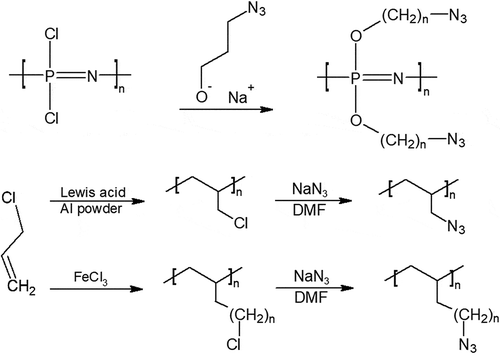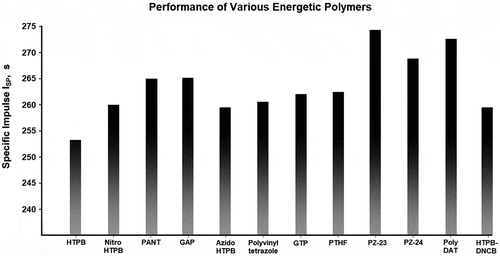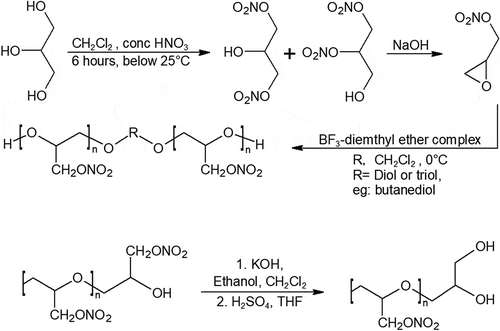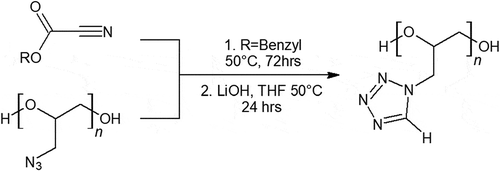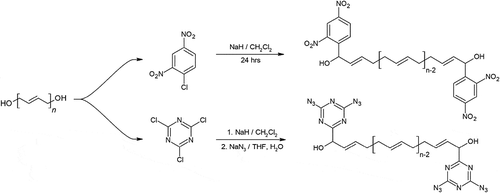Figures & data
Table 1. Mechanical properties of glycidyl azide polymer (GAP) – A comparison of mechanical properties between urethane and triazole cured GAP. For reference, HTPB-based APCP has a tensile strength of 0.7 N mm-2 and elongation maximum of around 60–80%.
Table 2. Mechanical properties of various energetic polymers. For reference, HTPB-based APCP has a tensile strength of around 0.7 N mm−2 and elongation maximum of around 60–80%.
